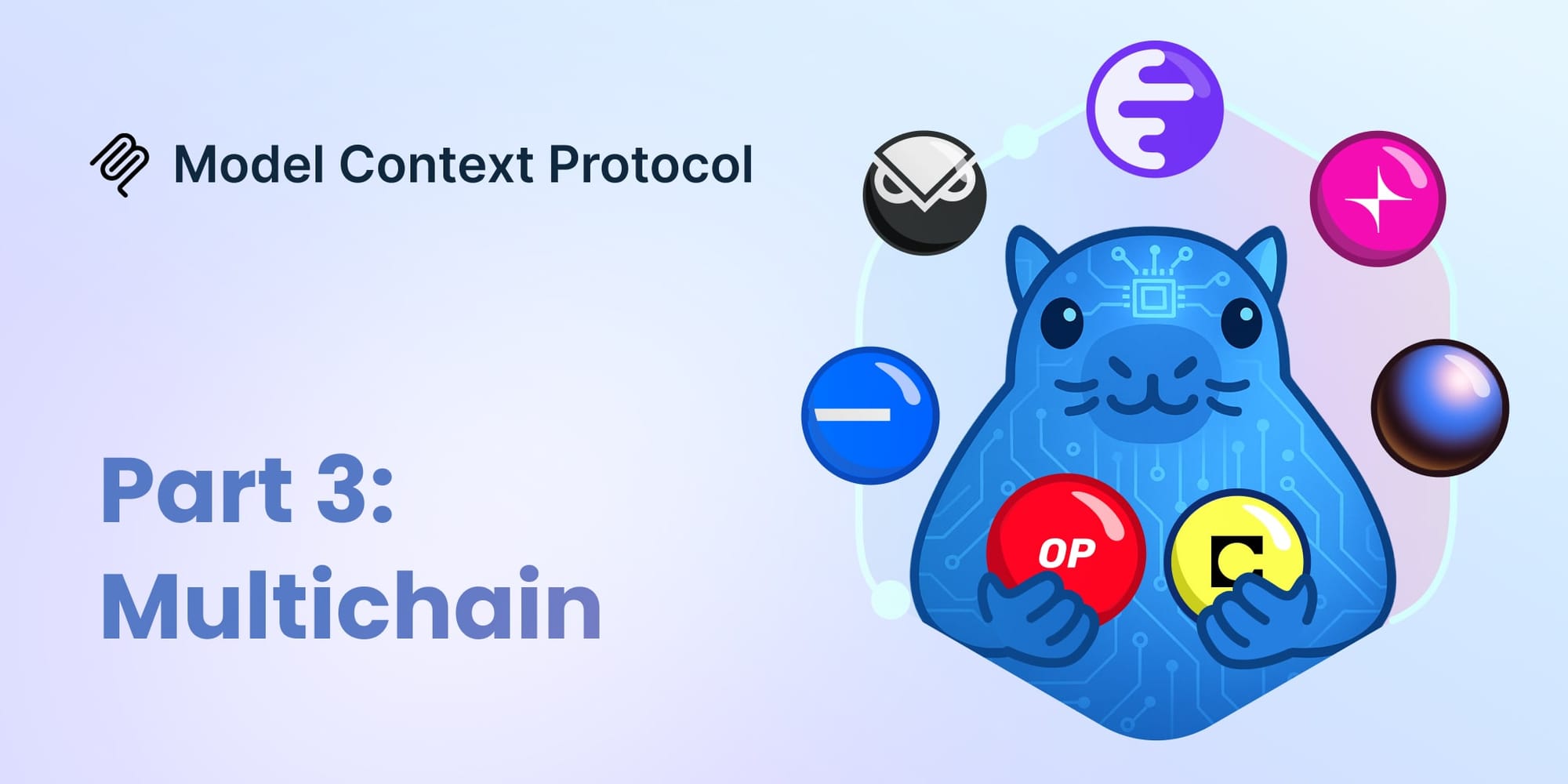MCP Explained Part 3: Multichain
The Blockscout MCP server’s multichain mode lets AI agents access data across multiple networks via Chainscout integration, ensuring stability and consistent API behavior through official Blockscout instances.

TL;DR: The multichain mode in the Blockscout MCP server is a key feature that enables agents to work with data from multiple networks without losing context.
It is implemented through integration with Chainscout, which manages the list of supported chains and their parameters.
The MCP server relies only on official Blockscout instances, ensuring stability, consistency, and predictable API behavior.
MCP Explained - Index
Why Multichain Matters
The Ethereum ecosystem is no longer monolithic. Besides ETH mainnet, there are many compatible networks - from L2 solutions like Arbitrum and Optimism to independent chains following the same standards, such as Gnosis and Polygon.
Users typically interact with several of these networks. Moreover, many rollups are inherently two-layered, having both a base layer and their own layer.
Therefore, LLM agents must be able to analyze data from multiple networks at once. For example, to check an address balance across chains or to trace fund movements through bridges.
Running a separate MCP server per network is impractical. Users can’t pre-connect dozens of servers, and tool descriptions of these MCP servers would quickly exhaust the model’s context. At the same time, Blockscout did not initially provide a unified access point for all its instances.
For that reason, a single MCP server was designed to be multichain - capable of querying several Blockscout instances at once and giving agents unified access to cross-network data.
However, integration with arbitrary third-party instances could lead to unpredictable results: inconsistent response formats, unsynchronized API updates, and unstable rate limits.
To prevent this, the MCP server communicates only with officially hosted Blockscout instances, which guarantees:
- a consistent response structure aligned with backend evolution;
- dedicated rate limiting for MCP traffic;
- predictable API behavior even during infrastructure updates;
- a unified environment for future user authentication if it is introduced for the Blockscout MCP server.
The Role of Chainscout
Chainscout acts as the link between the MCP server and the multiple supported networks.
It provides the /api/chains endpoint, which returns a list of all supported networks along with their chain IDs, the URLs of their Blockscout instances, and references to settlement layers for rollups.
The MCP tool get_chain_list calls this endpoint and returns a machine-friendly list of networks. Once the model receives it, it can pick the right network based on the user request - for example, “check the contract on Base” → select the chain ID for Base.
How Chain ID Is Used
Every MCP tool includes chain_id as a required parameter.
Before executing any request, the server calls Chainscout at /api/chains/{chain_id} to get the network metadata, including the Blockscout instance URL, and only then queries the appropriate API endpoint.

Optimization for Popular Networks
To reduce latency and minimize intermediate requests, the MCP server’s instruction set includes pre-known chain IDs for popular networks such as Ethereum, Base, and Gnosis.
This allows the agent to insert them directly - without first calling get_chain_list - whenever the target network is clear from context.

